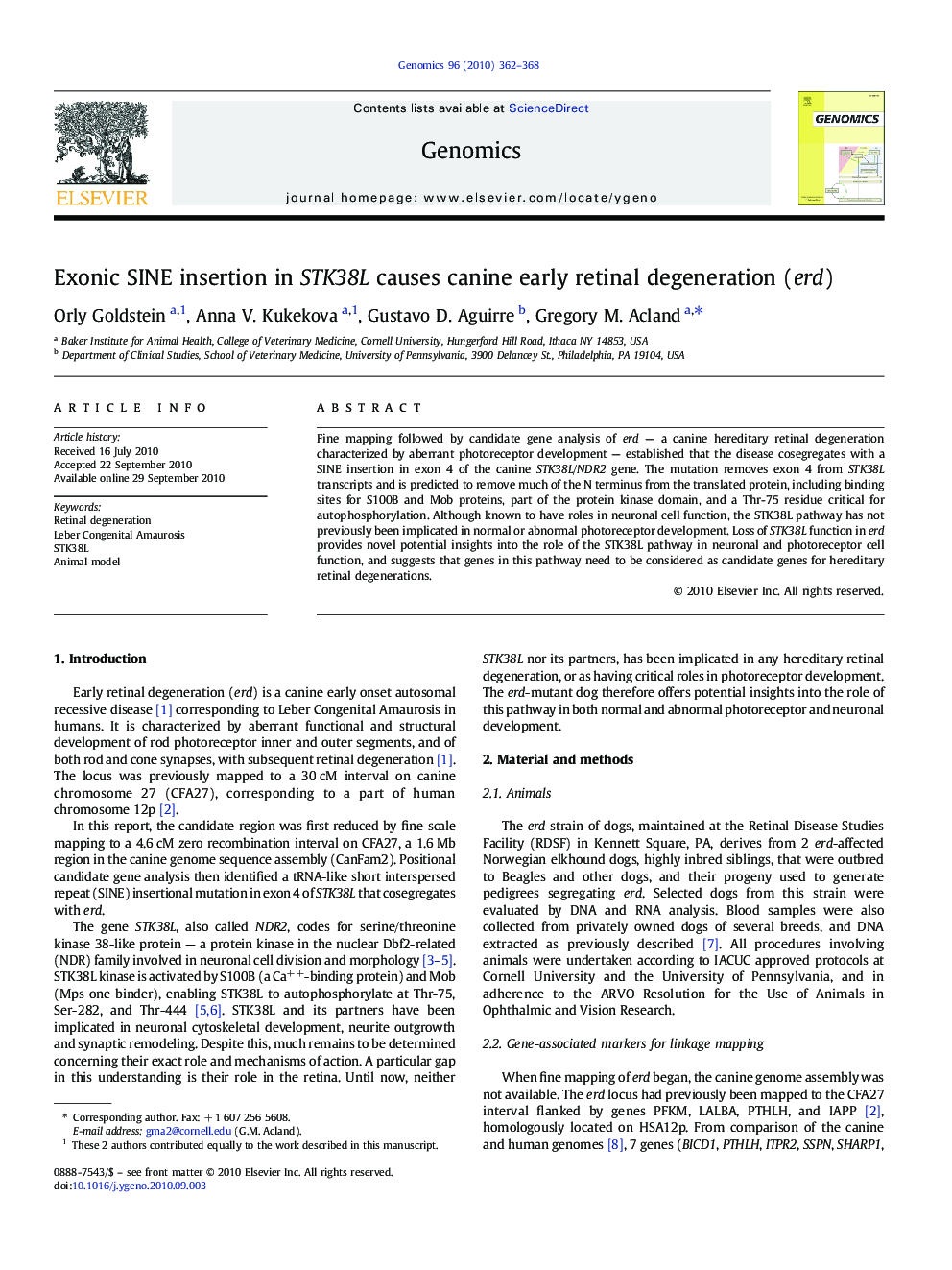| Article ID | Journal | Published Year | Pages | File Type |
|---|---|---|---|---|
| 2821132 | Genomics | 2010 | 7 Pages |
Fine mapping followed by candidate gene analysis of erd — a canine hereditary retinal degeneration characterized by aberrant photoreceptor development — established that the disease cosegregates with a SINE insertion in exon 4 of the canine STK38L/NDR2 gene. The mutation removes exon 4 from STK38L transcripts and is predicted to remove much of the N terminus from the translated protein, including binding sites for S100B and Mob proteins, part of the protein kinase domain, and a Thr-75 residue critical for autophosphorylation. Although known to have roles in neuronal cell function, the STK38L pathway has not previously been implicated in normal or abnormal photoreceptor development. Loss of STK38L function in erd provides novel potential insights into the role of the STK38L pathway in neuronal and photoreceptor cell function, and suggests that genes in this pathway need to be considered as candidate genes for hereditary retinal degenerations.
